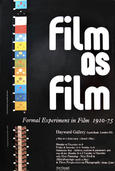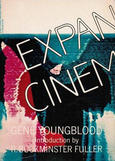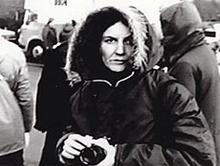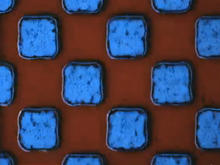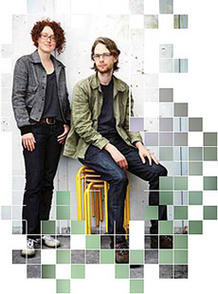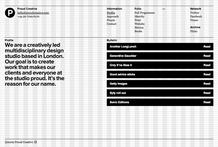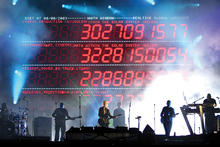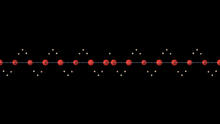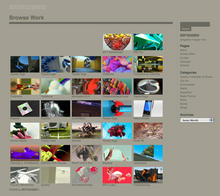Light Music
(1975)by Lis Rhodes is an innovative work that experiments with celluloid and sound to push the formal, spatial and performative boundaries of cinema. An iconic work of expanded cinema.
Light Music creates a more central and participatory role for the viewer within a dynamic, immersive environment.
Formed from two projections facing one another on opposite screens, Light Music is Lis Rhodes’s response to what she perceived as the lack of attention paid to women composers in European music. She composed a ‘score’ comprised of drawings that form abstract patterns of black and white lines onscreen. The drawings are printed onto the optical edge of the filmstrip. As the bands of light and dark pass through the projector they are ‘read’ as audio, creating an intense soundtrack, forming a direct, indexical relationship between the sonic and the visual. What one hears is the aural equivalent to the flickering patterns on the screens.
Light Music is projected into a hazy room – the beams that traverse one another in the space between the two projections become ethereal sculptural forms comprised of light, shadow and theatrical smoke. This format is designed to encourage viewers to move between the screens, directly engaging with the projection beams, forming a set of social relations in which cinema is transformed into a collective event without a single point of focus. Light Music occupies an important threshold in film history, drawing on early experiments in Visual Music from the 1920s by pioneers including Oskar Fischinger, Hans Richter and Walther Ruttmann, and subsequently opening cinematic practice up to a host of concerns from gender politics to phenomenological experience.
Source: Tate Modern
This engagement in the languages of film is extended in the expanded cinema work Light Music (1975, b/w, sound, 25m, 2 screen installation) where the image of the film is a musical score, drawn using pen and ink. Within film the use of an optical sound track is common - but this phrase optical soundtrack is surely contradictory. How can one combine something optical with sound? A series of horizontal and vertical lines literally represent the sound here. What can be perceived visually is a representation of what can be heard, whereby the noise corresponds to the spaces between the lines appearing on the screen. This work is designed for the audience to move away from the position of a static viewer, to move in and out of the screening. This creates a set of social relations against the definition of traditional film - the film becomes a collective event where the audience are invited to make interventions into the work itself.
As Lis Rhodes states, conditions and intentions motivate her work. Conditions of film, of unequal power relationships and motivations of making the invisible visible. By injecting doubt into assumptions, she engages with film in cultural, critical political and social contexts. (Lisa Le Feuvre)
Source: LUX
